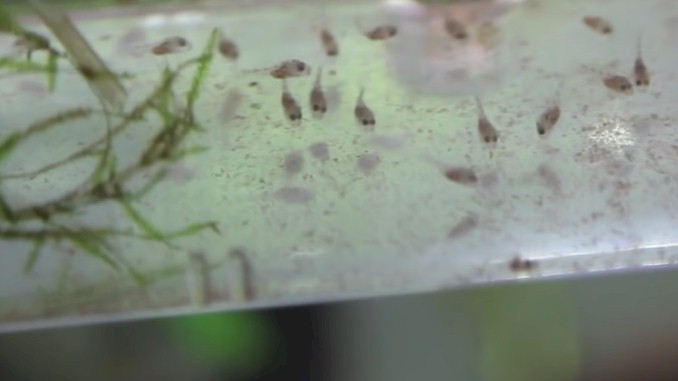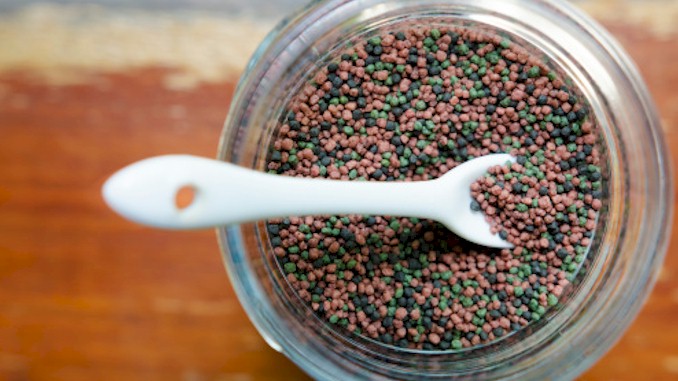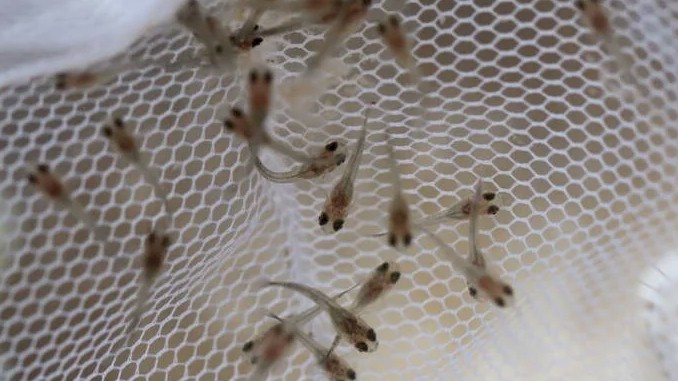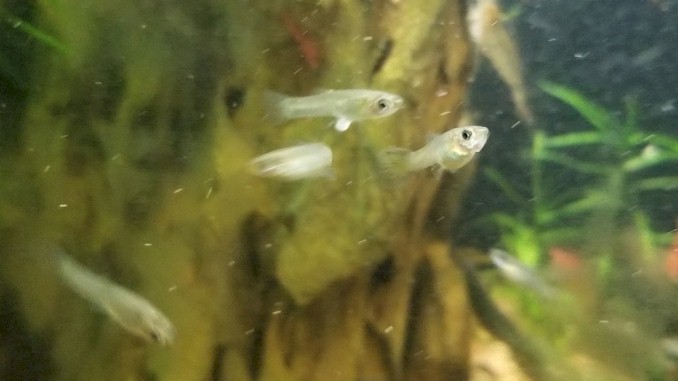Survival Rate Unveiled: How Many Guppy Fry Make It?
If you are a guppy owner, when you are shocked to see so many fry appear in your tank suddenly, you must be wondering how many of your guppy fry will survive to adulthood. I was in the same situation as you. But now I can answer this question after about 10 years of raising and maintaining my guppy tank.
The survival rate of guppy fry often falls between 0 and 40% on average. The survival rate of guppy fry depends on several factors, such as the number of fry, the size of the tank, the presence of predators, the quality of water and food, and the genetic traits of the parents. However, this percentage can vary widely depending on the conditions and care provided by the owner.
You might be wondering why the survival rate of guppy fry is so variable and what you can do to improve it. There are many factors that influence the fate of your guppy babies and some of them are beyond your control. However, there are also some things that you can do to increase their chances of survival and make them grow healthy and happy. Read on and find out:
How Many Guppy Fry Are Born in One Batch?
One of the first questions that guppy owners have is how many fry their guppies will have in one batch. The answer is not simple, as it depends on several factors that can vary from one guppy to another. However, there are some general guidelines that can help you estimate the number of guppy fry you can expect.
According to what I have learned, the average litter size for guppies is between 20 and 30 fry, but it can range from 2 to over 100 fry. The number of fry in a guppy’s litter is determined by several factors, including:
- The age of the mother guppy: Younger guppies tend to have smaller litters than older guppies. This is because their bodies are not fully developed yet and haven’t reached their full potential. On the other hand, older guppies can have up to three times as many fry as younger guppies.
- The size of the mother guppy: Smaller guppies will have smaller litters, while larger guppies can have larger litters. This is because larger guppies have more space in their bodies to accommodate more fry.
- The health of the mother guppy: If a guppy is unhealthy, she will likely have a smaller litter size. This is because her body is not able to produce as many fry as a healthy guppy. Factors that can affect the health of a guppy include stress, disease, parasites, poor water quality, and inadequate nutrition.
- The food and nutrition of the mother guppy: A well-fed and well-nourished guppy will have more fry than a malnourished or underfed guppy. This is because food and nutrition provide the energy and resources that a guppy needs to produce healthy and viable fry. A balanced diet that includes live foods, such as brine shrimp, bloodworms, and daphnia, can boost the fertility and fecundity of a guppy.
- The genetic traits of the mother and father guppies: Some guppies may inherit genes that affect their litter size. For example, some guppies may have genes that make them produce more male or female fry, which can affect the number of fry in a litter. Some guppies may also have genes that make them produce more twins or triplets, which can increase the litter size.
- The environmental conditions of the aquarium: The water temperature, pH, hardness, and oxygen levels can also affect the litter size of a guppy. Generally, warmer water temperatures (around 78°F or 26°C) can stimulate the reproduction and growth of guppies, while colder water temperatures (below 72°F or 22°C) can slow down or inhibit their reproduction and growth. The pH and hardness of the water should be within the range that suits the guppies’ preferences (pH 6.8 to 7.8 and hardness 8 to 12 dGH). The oxygen level should be high enough to support the respiration and metabolism of the guppies and their fry.
As you can see, there are many factors that can influence how many fry a guppy will have in one batch. Therefore, it is difficult to predict the exact number of fry you will get from your guppies. However, by knowing these factors and providing optimal conditions for your guppies, you can increase their chances of having healthy and large litters.
How Many Guppy Fry Will Survive?
As you have learned, the guppies can produce more 100 fry at a time. If you wonder how many guppy fry will survive to adulthood, the answer to this question depends on several factors, mainly the environment in which the guppy fry are raised. Now, let’s take a look at the survival rates of guppy fry in different breeding environments and how to improve them:
Survival Rates In The Main Tank
If you decide to keep your guppy fry in the main tank with the adult fish, you should be prepared to lose most of them.
The average survival rate of guppy fry in the main tank is between 0 and 15 percent.
This is because the adult fish, including their parents, will try to eat them as soon as they are born. Guppy fry are very small and vulnerable, and they have no defense against the predators in the tank.
Even if you have a guppy-only tank, you will still lose a lot of fry to cannibalism. The only way to increase the survival rate of guppy fry in the main tank is to provide them with plenty of hiding places, such as plants and decorations.
However, even then, you will not be able to save all of them. If you want to keep more guppy fry alive, you should consider moving them to a separate tank or a breeding box.
Survival Rates In A Breeding Box
When you have noticed that the female guppy is pregnant. You can put it into a breeding box. A breeding box is a small container that you can attach to the inside of your main tank. It has small holes that allow water to flow through, but prevent the adult fish from entering.
A breeding box can help you isolate your pregnant guppy before she gives birth and protect her fry from being eaten by the other fish.
The average survival rate of guppy fry in a breeding box is between 15 and 25 percent.
However, this depends on the size and quality of the breeding box and how long you keep the fry in it. A breeding box can be stressful for both the mother and the fry, especially if it is too small or crowded. The water quality in the breeding box can also deteriorate quickly if you do not change it regularly or use a filter. A breeding box is not a permanent solution for raising guppy fry. You should move them to a larger tank as soon as possible.
Survival Rates In A Breeding Tank
If you want a higher survival rate of guppy fry, you should consider set up a breeding tank. A breeding tank is a separate aquarium that you can use exclusively for raising your guppy fry.
It can be any size, but it should have enough space for your fry to swim and grow comfortably.
A breeding tank can offer you more control over the water quality, temperature, filtration, lighting, and decoration of your guppy fry’s environment.
The average survival rate of guppy fry in a breeding tank is between 30 and 40 percent.
However, this can vary depending on how well you take care of your breeding tank and your fry. A breeding tank requires regular maintenance, such as water changes, cleaning, testing, and monitoring. You should also provide your fry with adequate food, oxygen, and hiding places. A breeding tank can help you raise healthy and happy guppy fry that will eventually become beautiful adult fish.
As you can see, there are different ways to raise your guppy fry and different survival rates associated with each method. You should choose the method that suits your budget, space, time, and preference. However, regardless of which method you choose, you should always provide your guppy fry with optimal conditions and care that will help them survive and thrive.
What Affects The Guppy Fry Survival Rate?
Besides the breeding environment, there are other factors that can affect the guppy fry survival rate. These factors can influence the health, growth, and development of the guppy fry and determine how many of them will make it to adulthood. In this section, we will discuss some of these factors and how to optimize them for your guppy fry.
Genetic Abnormalities
This is a factor that you cannot change, but you should be aware of. Some guppy fry may inherit genetic defects or mutations from their parents that can cause them to die prematurely or have deformities.
For example, some guppy fry may have bent spines, missing fins, or malformed organs. These genetic abnormalities can reduce the survival rate of guppy fry and affect their quality of life.
To prevent genetic abnormalities, you should avoid inbreeding your guppies and choose healthy and diverse parents for breeding.
Parental Health Issues
The health of the mother and father guppies can have a significant impact on the health of the fry. If the parents are sick, stressed, malnourished, or infected with parasites or diseases, they can pass these conditions to their offspring.
This can result in weak or sickly fry that have low chances of survival. To prevent parental health issues, you should keep your guppies in optimal conditions and provide them with a balanced diet and regular check-ups. You should also quarantine any new or sick guppies before introducing them to your breeding tank.
Swimming Space
How much space do the guppy fry have in the tank? This can affect their survival rate in several ways:
- First, more space means more room for the fry to swim and exercise, which can improve their growth and health.
- Second, more space means less competition for food and oxygen, which can prevent starvation and suffocation.
- Third, more space means less aggression and stress among the fry, which can reduce injuries and infections.
To provide enough swimming space for your guppy fry, you should choose a tank that is large enough for their number and size. A general rule of thumb is to provide at least one gallon of water per guppy.
Hygiene Status
How clean is the water and the tank where the guppy fry live? This can affect their survival rate by influencing the water quality and the presence of harmful substances.
If the water is dirty or polluted with ammonia, nitrite, nitrate, chlorine, or other toxins, it can harm the guppy fry’s delicate organs and cause diseases or death. If the tank is dirty or has decaying organic matter, such as uneaten food or dead plants, it can lower the oxygen level and increase the bacterial load in the water.
To maintain good hygiene status for your guppy fry, you should perform regular water changes (10 to 20 percent per week) and use a filter that can remove both mechanical and biological waste. You should also remove any debris or leftovers from the tank and clean it with a gravel vacuum or a siphon.
Water Parameters
What are the water parameters in the tank where the guppy fry live? This can affect their survival rate by influencing their comfort and stability.
Guppy fry are sensitive to changes in water parameters, such as temperature, pH, hardness, and salinity. If these parameters are too high or too low for their preferences, they can cause stress or shock to the fry and affect their immune system and metabolism. If these parameters fluctuate too much or too often, they can cause instability or inconsistency in the water conditions and affect the fry’s adaptation and growth.
To maintain optimal water parameters for your guppy fry, you should use a thermometer, a pH meter, a hardness test kit, and a salinity meter to monitor them regularly. You should also use dechlorinated tap water or bottled water that matches their preferences (temperature 78-82°F; pH 6.8-7.8; hardness 8-12 dGH; salinity 0-0.5 ppt). For more information, you can read my another article: Guppy Fry Care Made Easy: Tips and Tricks for Success
Food And Feeding Frequencies
What do you feed your guppy fry and how often do you feed them? This can affect their survival rate by influencing their nutrition and growth.
Guppy fry need high-quality food that is rich in protein and vitamins to support their development and health. They also need frequent feedings to meet their high metabolic demands and prevent hunger. If you feed your guppy fry low-quality food or insufficient food, they can suffer from malnutrition or stunted growth. If you feed your guppy fry too much food or too infrequently, they can suffer from overfeeding or underfeeding.
To provide adequate food and feeding frequencies for your guppy fry, you should feed them specially formulated fry food that is small enough for their mouths and contains the nutrients they need. You should also feed them at least three to four times a day, but only as much as they can consume in a few minutes. You should remove any uneaten food from the tank to prevent water pollution. For more information, you can read my other articles: Guppy Fry Care Made Easy: Tips and Tricks for Success and Healthy Foods for Guppy Fry: Top 7 Picks.
Inconclusion
The survival of guppy fry depends on a variety of factors, some of which are outside your control, such their genetic makeup. In many cases, the untimely fatality of guppy fry can also be attributed to the initial health and shape of the parents.
You still have the ability to exercise control over some things, though. By keeping things from getting too crowded, providing plenty of safe places for the fry to hide, and feeding them at the right intervals, you may create an environment where they can thrive.
As a general rule, the survival rate of guppy fry often falls between 0 and 40%. However, by carefully modifying the water parameters, which includes keeping an eye on the pH levels, ammonia, nitrates, and nitrites, it is feasible to boost this rate. Their health also depends on maintaining a temperature between 78 and 80 degrees Fahrenheit.







